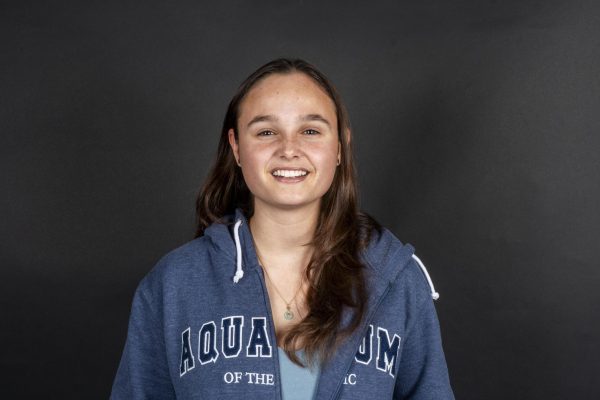Kindergarten Tactics
A shift toward immersive-environment learning may be more beneficial while learning a second language than memorization-based curriculum.
My cousin picked up English within a few months of her 1st birthday. One minute she’s babbling noises, and the next she’s constructing sentences telling me what she wants, when she wants it and why. Meanwhile, my 15-year-old friend is struggling with tenses and verbs in Spanish class. The difference? When learning a language, immersive language tactics are much more effective than memorization-based ones.
Naturally, when the human brain is developing in its first years, a child is introduced to words, phrases and noises associated with objects or people. This helps them distinguish an apple from an orange, or their mom from their dad. Having no previous knowledge, they learn from the world as they go. Learning from adults, word association, and listening to others speak have been proven to be efficient processes for picking up a language: according to TESSA International School, “[Babies] learn by being immersed in multilingual environments. They passively ‘absorb’ the language through contact.”
When a middle school or high school teenager is exposed to language through sit-down lectures detailing word structures and sentences, their brain is still developing and making neural connections. However, learning from exams or lessons is not as effective as immersing oneself in an environment of language, and the brain isn’t as likely to pick up things as fast as it once did. When learning English as toddlers, native speakers don’t learn how to conjugate verbs from a worksheet–I watched Sofia the First and Sesame Street.
Not all RBUSD students are exposed to programs that provide language lessons when enrolled in kindergarten or elementary schools. The only school that provides a continuous dual immersion program is Washington Elementary School. Lincoln, Tulita, and Beryl elementary schools offer a one-hour welcome introductory Spanish club after school for about an hour once per week. Though that makes four out of seven elementary schools that provide some sort of dual language program, either after school or included in the regular curriculum, the schools that only offer it once a week for about an hour don’t provide students enough time to really absorb the Spanish.
According to a 2019 article from the BBC, “[the] US Foreign Service Institute (FSI) divides languages into four tiers of difficulty for native English speakers to learn. Group 1, the easiest of the bunch, includes French, German, Indonesian, Italian, Portuguese, Romanian, Spanish and Swahili,” which take about 480 hours of practice to reach basic fluency. Group 2 languages (including Greek, Urdu, Hindi, and Persian) take 720 hours of practice. Notice the difference between learning and practice: just because you spend an hour learning how to conjugate in the present perfect tense doesn’t mean that you’re practicing it with someone else. The other key is consistency: associate professor and director of language assessment at Ottawa University Beverley Baker notes that “without a consistent schedule the brain fails to engage in any deep cognitive processes, like making connections between new knowledge and your previous learning.”
I myself have struggled with taking language classes throughout my education. I wanted to start learning Spanish in middle school, but due to a limited number of electives on my schedule, I chose band instead. This year, I started off with Spanish 1, but when presented with an opportunity to join advanced jazz band, I dropped Spanish to make room for music. Each year I delay learning a language, the harder it becomes for me to pick it up faster. Furthermore, delaying fulfillment of my language credit has made language yet another class requirement I have to fill, instead of something I should find exciting or be more passionate about.
If RUHS provided a program that would use environmental immersion to teach students with songs, pictures, gestures, and objects, students would pick up languages faster, resulting in a much easier learning process moving forward. If this program was offered, it might increase the number of students earning their seal of biliteracy at RUHS. This might also make students more passionate about learning a different language.
Language is something that is necessary to communicate with people from different cultures. Especially in the U.S., which is so rich in linguistic and cultural diversity, being bilingual is valuable in almost every industry. Bilingualism aids in succeeding in the business world or any jobs I or any other student acquire in the future.
While high school language classes still offer many advantages and important lessons such as teachings about countries’ culture and grammar rules, immersion and practice-based fundamental classes for better understanding, knowledge, and passion for languages would be monumentally more valuable to students.

Hi! I'm excited to be a features editor for the second year in a row, and If you are a student who does something interesting on campus, beware, I am going to exploit your talents. I am an avid Gilmore...


